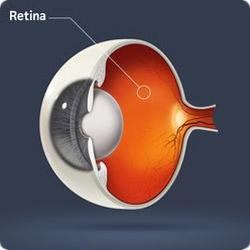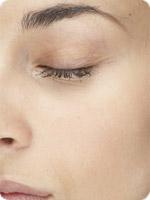Retinopathy is a non-inflammatory damage to the retina in the eye. It is most commonly caused by a problem with the blood supply within the eye. Diabetic Retinopathy is caused by complications of diabetes mellitus and can eventually lead to blindness. All diabetics who have suffered diabetes for fifteen years are more are at risk of diabetic retinopathy. It affects at least 80% of diabetics who have had diabetes for fifteen years or more.
There are often no early warning signs of diabetic retinopathy. The most common symptom is blurred vision. Sometimes the vision improves for a while.
What happens?
New blood vessels in the back of the retina are weak because they are not mature and they are affected by abnormal amounts of blood glucose so they hemorrhage. The hemorrhaging blurs vision. There may be blood specks (spots) floating in a person's visual field after the bleeding but those often go away after a few hours. A greater leakage of blood usually follows. The larger hemorrhages tend to happen repeatedly, often during sleep.
Symptoms may be blurry or double vision; rings within the vision area; flashing lights or blank spots; pain or pressure in one or both eyes; problems with peripheral vision.
Persons with continual high blood glucose levels and/or high blood pressure are highly susceptible to retina damage.
The wisest way to counteract this problem is for a diabetic to keep blood glucose levels and blood pressure as normal as possible.
Sometimes laser treatment is used to treat damaged blood vessels in the eye. The laser beam closes off leaking blood vessels; thus, keeping bloodied fluid from leaking into the vitreous. Laser treatments do slow the loss of sight.
Also, if the damage is really severe surgery called a vitrectomy is possible. The bloody fluids in the eye are replaced by clean fluid.
Cataracts (a 'cloud' covers the lens of the eye) and glaucoma (which is caused by pressure building in the eye) are also common in people with diabetes.
When diabetes is well controlled possibility of these eye problems are less possible. Keeping blood glucose and blood pressure as close to normal as possible is essential in preventing these diseases.
Another way to prevent all eye problems is to have your eyes examined every year. Glaucoma and cataracts are not exclusive to diabetes. High blood pressure, whether you are diabetic or not, can cause bleeding in the retinas.
So as a precaution visit your medical doctor and your eye doctor on a regular basis, whether or not you have diabetes and/or high blood pressure. The best medicine to practice for all ages is preventative medicine.



